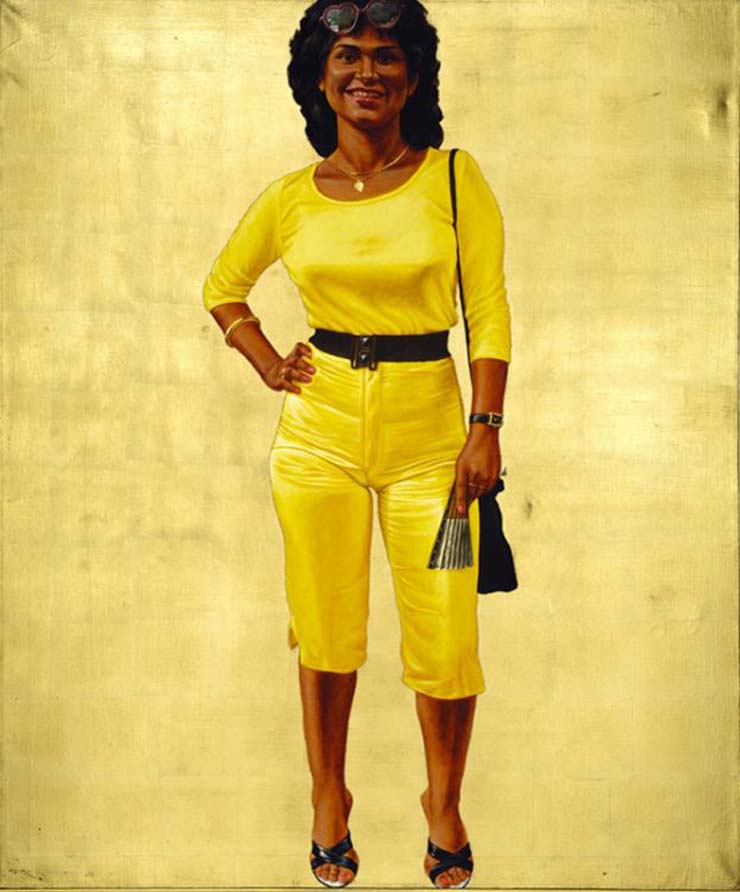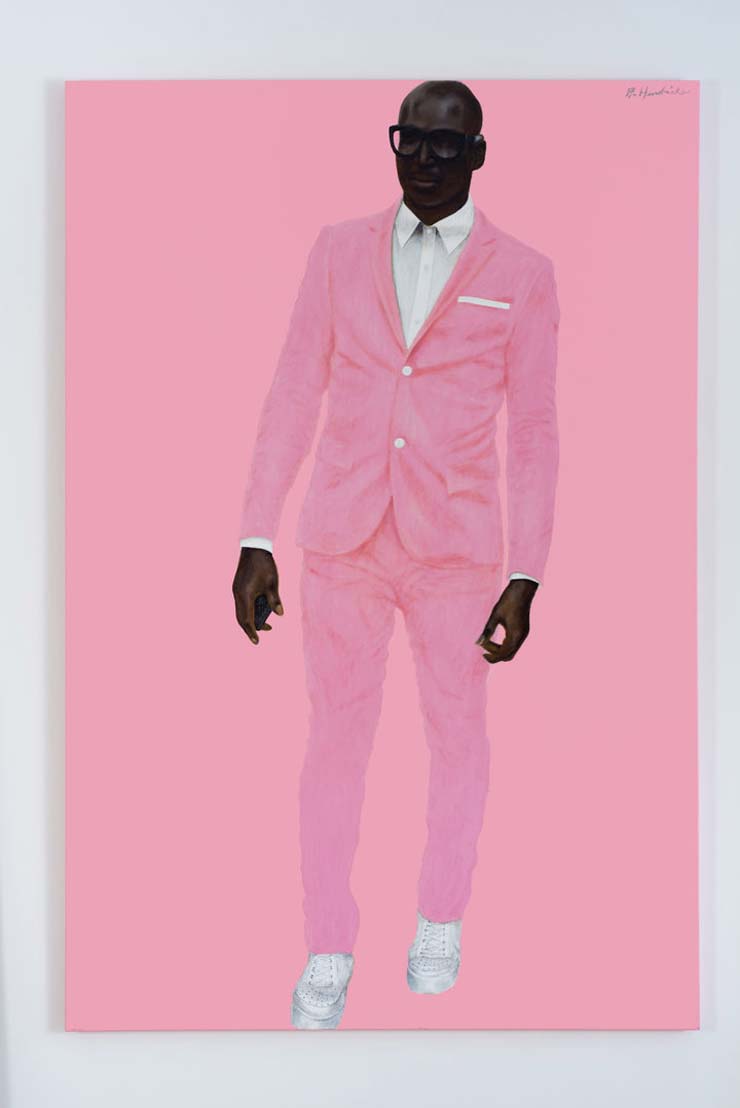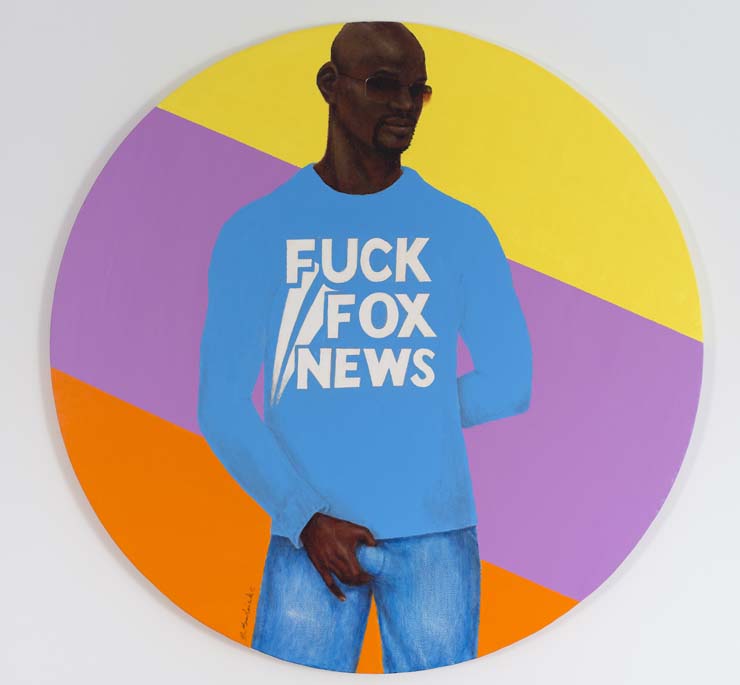#RIP: ARTIST, BARKLEY L. HENDRICKS
Artist Barkley L. Hendricks died this morning.
He had a retrospective at the Nasher Museum of Art at Duke University in North Carolina that is currently touring the United States. Hendricks said in an interview with the Tate last year,
“I’m just trying to do the best painting of the individuals who have piqued my curiosity and made me want to paint them.”
His models are often dapper against bold monochromatic backdrops, often of the same color as their outfits. Below you can see Steve (1976), owned by the Whitney Museum, a life-size portrait of a man wearing a white trench coat, white pants, and dark aviators, Blood (Donald Formey), 1975, a man in a red and orange patterned jacket and pants against a red rectangle and Bloke(2016), which was in his final exhibition, in New York City, is a man wearing a pink suit on a pink ground.
Barkley L. Hendricks, (self-portrait) Brilliantly Endowed, 1977
Critics saw Hendricks’s work as engaged with the Black Power movements of the 1960s and ’70s, but Hendricks bristled at the idea he was being political. He said last year.
“Let me correct the assumption that my early work was explicitly political. I was only political because, in the 1960s, America was fucked up and didn’t see what some artists or what black artists were doing. It was political in their minds. My paintings were about people that were part of my life.”
In later years, his work did take an explicitly political turn. A man wearing a “FUCK FOX NEWS” shirt while grabbing his crotch was a recent portrait and others featured young men in hoodies, raising their hands, as if confronted by the police. Hendricks recalled his time in Philadelphia as a young man.
“Anywhere you went in areas of color you had to address the police. You had to watch out for the police and you had to watch out for the thugs. In a way the police and the thugs were one and the same.”
Hendricks was born on April 16, 1945, in Philadelphia to a construction worker father. He grew up in the city and attended the Pennsylvania Academy of Fine Arts. It was through his large-scale portraits that made his name, however Hendricks also painted landscapes, the occasional still life, and played music in various jazz groups.
Gallerist Jack Shainman has represented Hendricks since 2005. He said,
“He was a true artist’s artist, always dedicated to his singular vision; he was a figurative painter when it was trendy and especially when it wasn’t.”
In one of his finest works, Lawdy Mama (1969), below, he shows a young black women with a large afro as a kind of saint, against a gold-leaf backdrop. Many viewers have identified her as Angela Davis or Kathleen Cleaver over the years, but it was in fact a portrait of his cousin.
Barley L. Henricks turned 72 just two days ago.
(via ArtNews)






